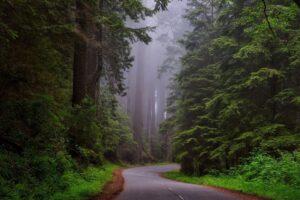Binoculars are excellent tools when exploring the great outdoors. They can be used to spot good areas to set up camp, dangers that you can’t make out with the naked eye, are fantastic for getting a better view of wildlife, and a huge range of other benefits and tasks that will enhance your outdoor experience.
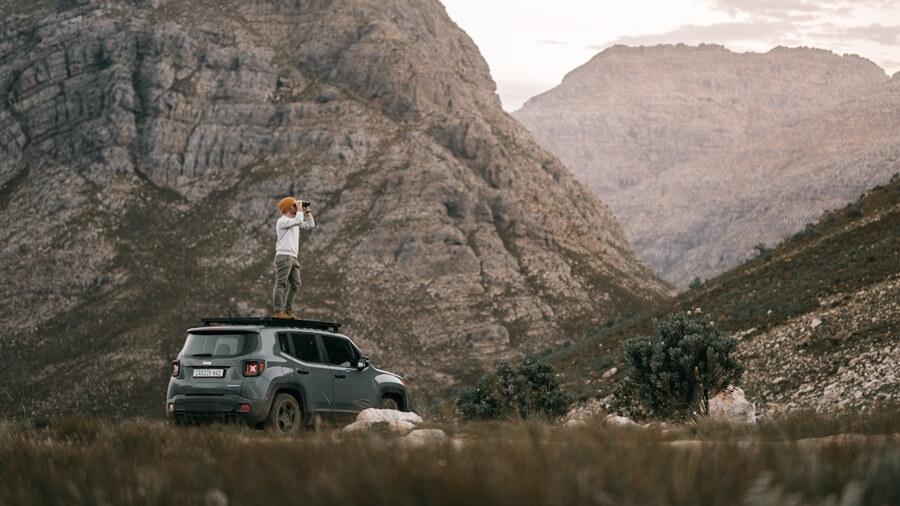
One of the challenges you may face is which binoculars you should get. The prices for different binoculars range drastically, and depending on what you’re doing, you may or may not need extremely expensive binoculars.
Detailed below is the Camping Feed guide on how to choose your binoculars.
How To Choose Binoculars
Binoculars come in a range of prices with all kinds of features, numbers, and buzzwords that can be confusing especially if when you look at two different binoculars with the same features, the costs can be hugely different.

One of the important aspects when looking at your binoculars are the numbers or specs listed on them; you’ll see them listed as “8×42” or “10×25” or a range of other values. These numbers indicate the binocular’s magnification power (strength) and objective lens diameter (size).
Binoculars that are “8×42” indicate that the magnification power is “8” and the diameter of the lens closest to the object is 42mm. Understanding how these numbers benefit you in different scenarios can help you decide which are best for the activity you’ll be using them for and the values further below.
You’ll also be able to pick different features such as water resistance, fog resistance, and even impact resistance that can benefit you during specific activities. So consider if you’ll be using your binoculars in rough environments or wet environments that need additional protection.
Binocular Specs (Size)
In a broad sense, there are three primary sizes for your binoculars, compact, mid-size, and full-size. These sizings just help you narrow down the type of binoculars you want to check out at the store rather than rummaging through them all.
The sizes are based on the objective lens size, which is the larger number in the binoculars specs.
- Compact: Less than 30mm (Eg. 8×28 or 10×25)
- Midsize: 30mm to 40mm (Eg. 8×32 or 10×30)
- Full-size: Great than 40mm (Eg. 8×42 or 10×50)
The smaller the objective lens diameter, the easy to hike with and the more comfortable to hold for long periods of time, while the larger the lens, the brighter the image is going to be, but the binoculars become bigger, heavier, and more challenging to hike with.
Binocular Specs (Magnification)
For most standard binoculars, you’re going to be picking a magnification of 8 or 10, though you may find some models higher or lower than this, but it’s not the norm, and you’ll have to hunt if that’s what you’re after.
- Magnification of 8: A wider field of view but less detailed.
- Magnification of 10: A narrower field of view but more detailed.
So essentially, you’re either seeing objects appear 8x closer than your naked eye or 10x closer. You need to decide if a wide field of view or a more detailed view of objects is most important for your binoculars.
Higher magnification may not be ideal for some situations as the binoculars can pick up a more detailed view, but any shaking, even just from your hand, can make the image appear to shake and harder to see. So consider whether high magnification binoculars make sense on the water or other unstable areas.
Binocular Specs (Field Of View)
Field of view is another important spec that any good pair of binoculars is going to advertise; the object diameter and magnification aren’t the only factors in the field of view, so you may have two pairs of 8×32 binoculars with different fields of view.
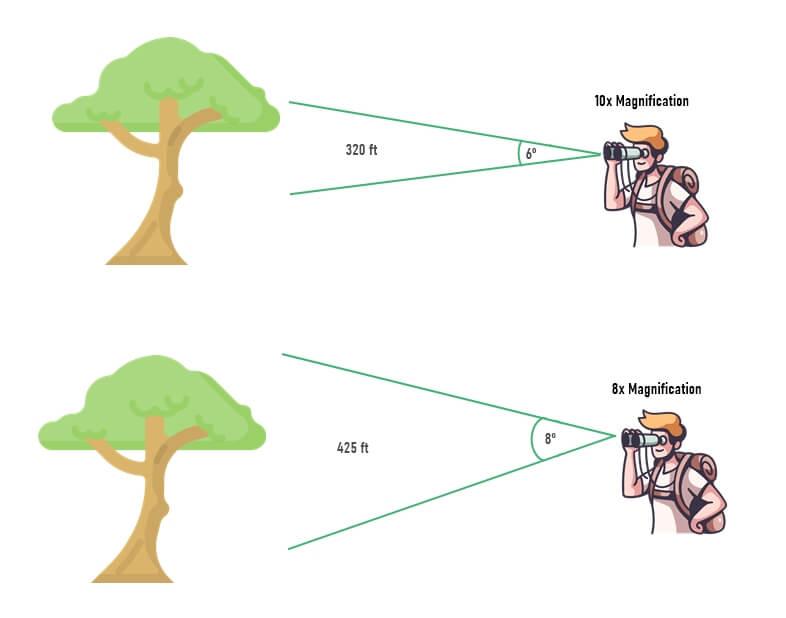
A narrow field of view can make spotting or following moving objects that are far away a more challenging process, so bird spotting or whale watching would do better with a wider field of view.
The field of view spec indicates how wide of an area you can see at 1,000 yards, so a higher value can often be a better option if you’re trying to spot objects far away.
Binocular Specs (Exit Pupil)
A higher exit pupil value on your binoculars means that your images will be brighter, and images will be maintained easier with binocular movement. You’ll have brighter and clearer images in low light or when your hands are shaking.
- Low Light: 5mm+ will make images brighter and clearer at dawn or dusk, and even with heavy foliage coverage.
- High Light: 2mm is the standard for most binoculars, and exit pupil shouldn’t be a factor for daytime viewing with good lighting, but check that you don’t get less than 2mm.
Binocular Optics
The optics of your binoculars will play a significant factor in their overall performance, which is why you can have two pairs of binoculars with the same specs but at wildly different prices; the optics that make up the binoculars will be higher quality and provide better performance.
Binocular Materials And Coatings
Lens materials and the coatings on the lens are too varied to list, but higher-cost binoculars should have high-quality materials and coatings on the lens that assist with glare and reflection, and improve the brightness, sharpness, and field of view of your binoculars.
Binocular Prism Type
The prism type is what brings the image in from the lens to your eyes, and typically the older style “porro prisms” have bulky barrels, and the newer “roof prisms” have barrels that line up with both lenses.
You can’t 100% say which prism type will be better as there are other factors, but understand that the bulky “porro prisms” provide older technology, so if the features are all the same between binoculars but the prism type is different, go with the newer technology.
Which Binoculars Are Best For Different Activities?
You may be buying binoculars for a specific activity to make it more enjoyable rather than just having a pair of general-purpose binoculars for camping and hiking. There are a number of activities that can benefit from specific features and specs on the binoculars.
Binoculars For Hiking
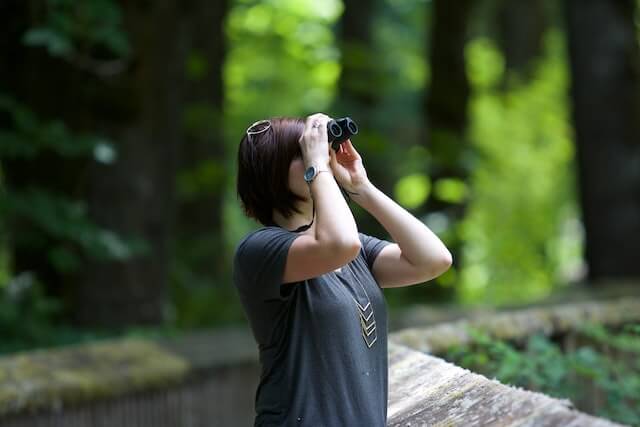
When you’re hiking, you typically want to keep your pack light so that you’re not wasting energy on lugging around too many tools or other supplies, so binoculars that will do the job but aren’t too big or heavy need to be weighed up.
Picking binoculars that have a magnification of 8 or 10 and an objective lens diameter on the smaller side, such as 25 or 28, should provide good viewing in a smaller package to more easily hike with.
Having rubber padding for impact resistance and potentially water resistance will keep your binoculars lasting longer and in better condition, especially if you’re going back-country hiking.
Binoculars For Birdwatching

Most birdwatchers are less concerned about size and weight, as spotting the bird is more important than a compact hiking pair of binoculars. So typically going for a midsize or full-size pair of binoculars will give you better features and a more enjoyable experience.
Depending on your style of birdwatching, you may want a magnification of 8 so that you can spot birds more easily out in the wilderness where you don’t have a huge range of birds n the same location.
If you’re on a birdwatching walk or platform, then a magnification of 10 will provide a clearer image and makes more sense when you’re not trying to spot the birds in dense foliage.
Binoculars For Wildlife Viewing
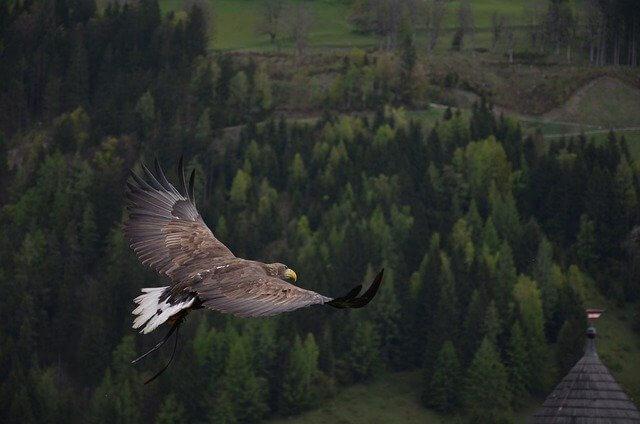
Most wildlife viewing is going to be from a distance, and the wildlife will be on the larger side, things like bears or whales, so go with a higher magnification of 10 as the image will be clearer, and you won’t be trying to find something too small.
Your only challenge will be a magnification of 10 can pick up shaking of your hands or boat more easily, so rough water may make whale watching tough, though whale watching from the land will absolutely need a magnificent of 10.
Binoculars For Paddling
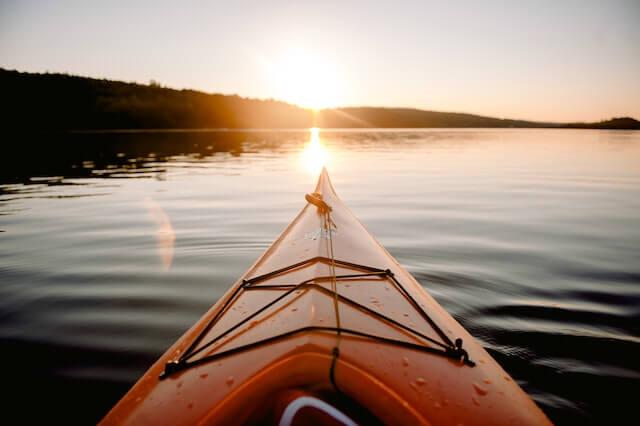
If you’re kayaking, canoeing, or on any other smaller type of watercraft, you’ll want to stick with a magnification of 8, as any type of shaking will make the image harder to view.
You’ll also typically have a much better chance to get closer to things on a smaller unpowered watercraft than with a larger whale watching boat. So consider the type of watercraft you’re on to match the right kind of magnification.
Midsize binoculars should provide great features without being too large or heavy to handle while you’re holding a paddle or on an unbalanced platform.
Binoculars For Watching The Stars or Stargazing

When stargazing, you want maximum magnification, so going with a pair of full-size binoculars and a magnification of 10 will make the experience much better.
You may also want to invest in a tripod to help keep your binoculars steady.
Test Your Binoculars Before Buying
Testing your binoculars before you make the purchase is a crucial part of the process; make sure they feel comfortable in your hands and on your eyes. You should also be checking to see whether the pair you’ve selected will function to the level you want, so try to use them in a way that you plan to in the wilderness.
Try to spot something far across the store or outside and check how the image appears, and then compare the performance to a few other models. You may find that two pairs with the same specs just don’t perform the same.

